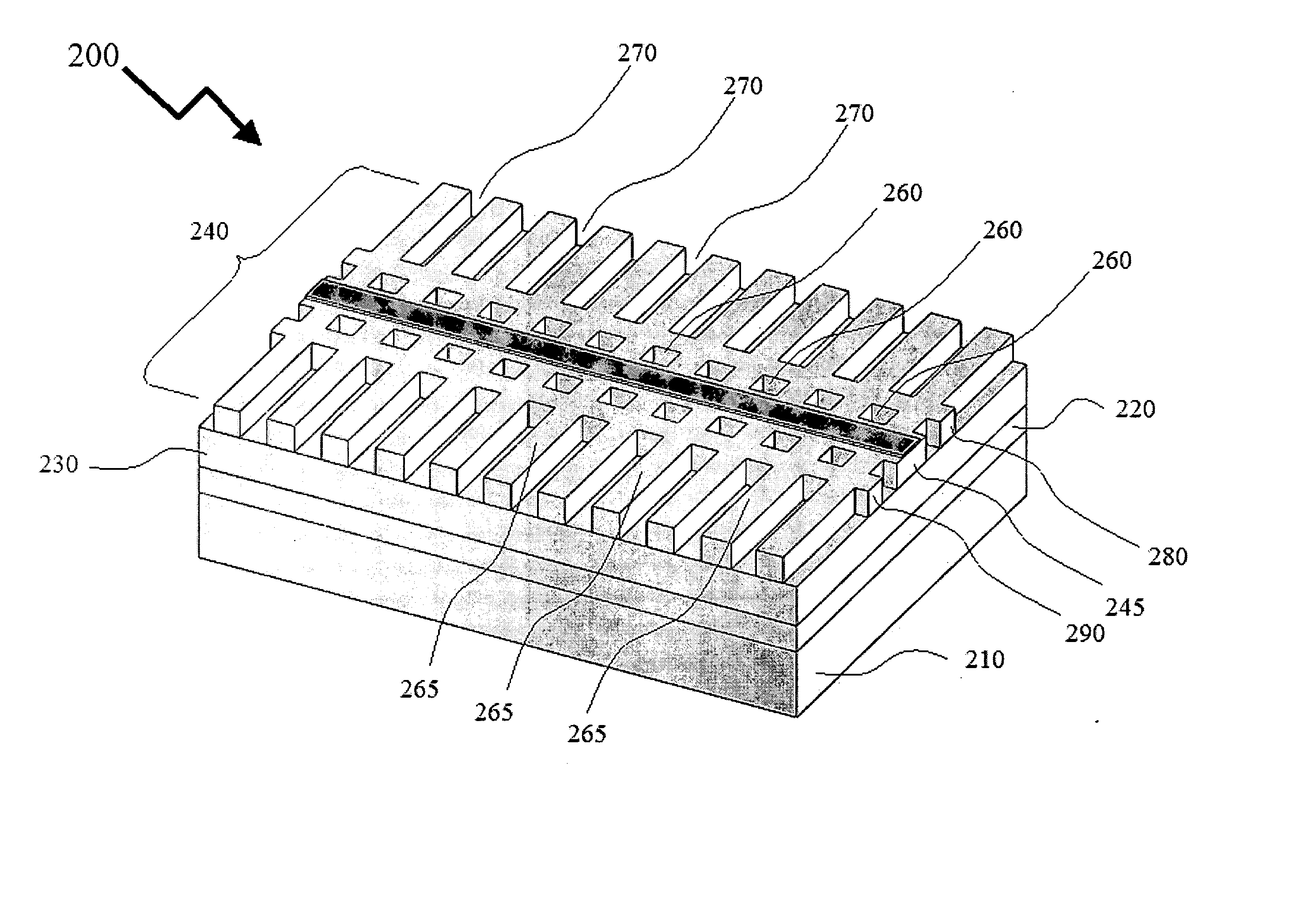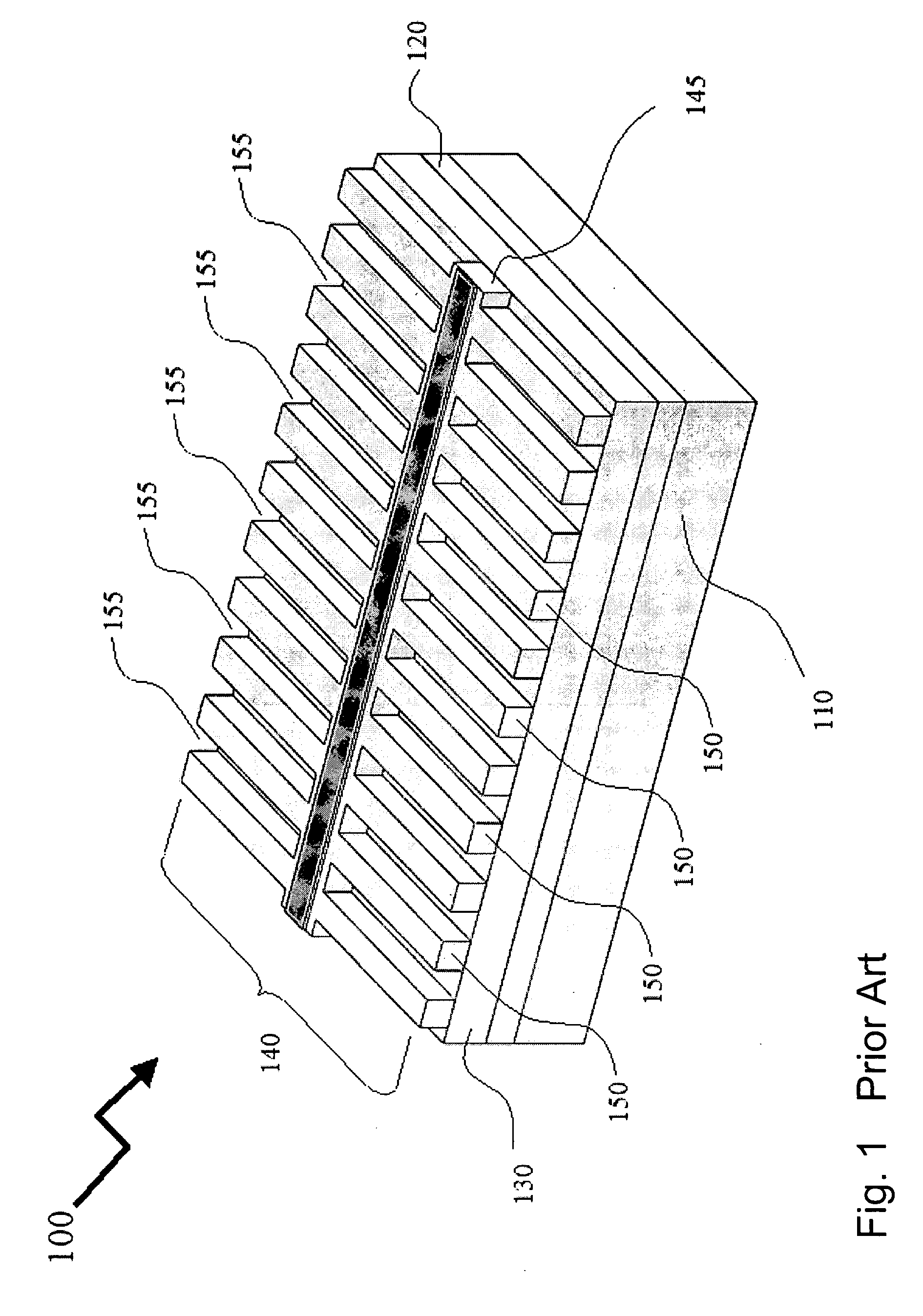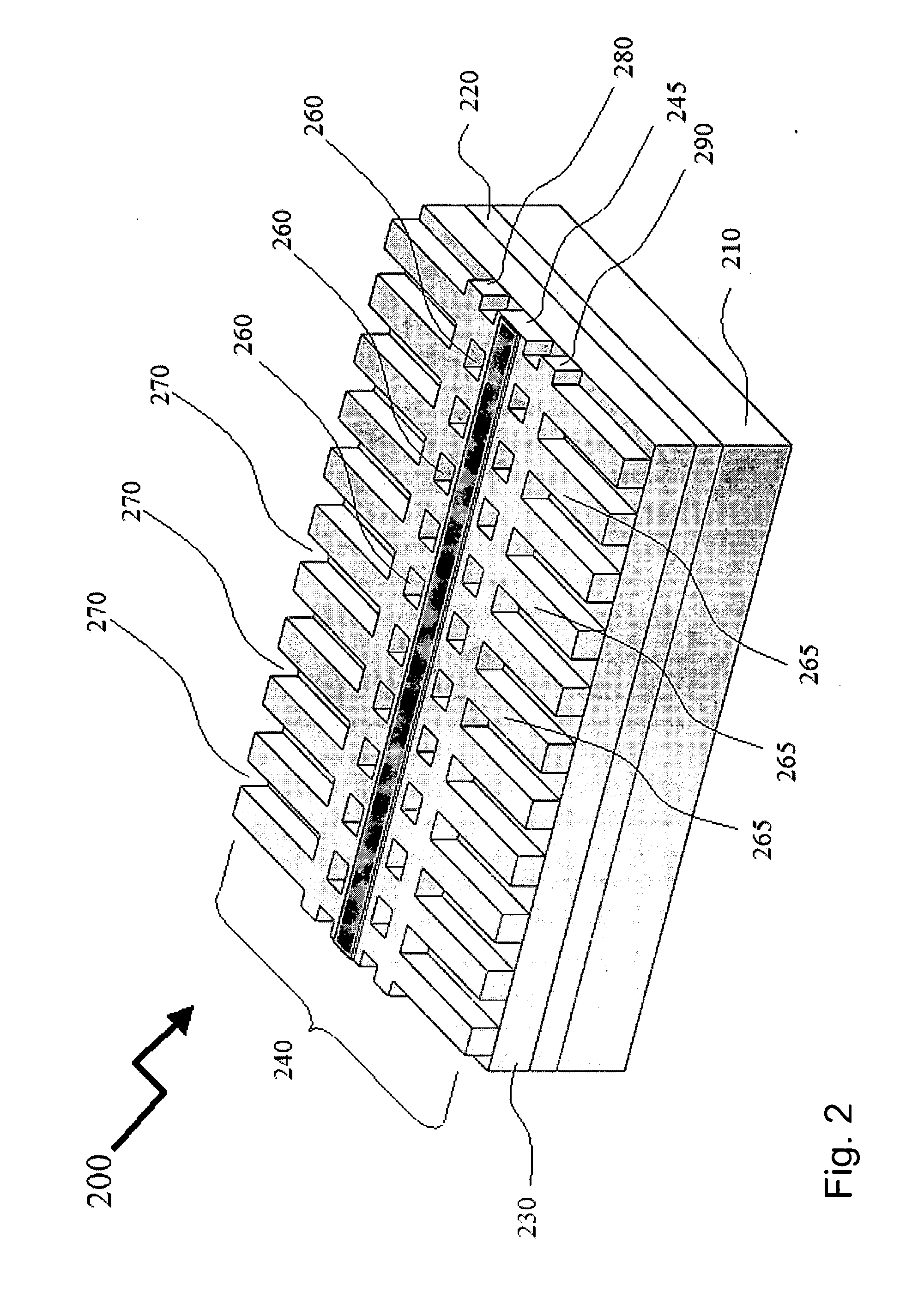Coupling-enhanced surface etched gratings
a technology of etched gratings and couplings, which is applied in the field of integrated photonics, can solve the problems of not necessarily the optimum solution from fabrication complexity, the device design of etched gratings and the technique is not particularly low complexity or high yield. achieve the effect of enhancing the coupling of the effective ridge lc-seg
- Summary
- Abstract
- Description
- Claims
- Application Information
AI Technical Summary
Benefits of technology
Problems solved by technology
Method used
Image
Examples
Embodiment Construction
[0036]FIG. 1 illustrates a schematic three-dimensional view of a prior art embodiment of an effective-ridge LC-SEG structure 100. Shown are a waveguide layer structure comprising lower cladding layer 110, core waveguiding layer 120, and upper cladding layers 130 and 140. The LC-SEG waveguide structure is defined by the parallel continues trenches etched in the top portion of the upper cladding layer 140 on the both sides of the narrow strip of the intact material 145, which acts as the (only) effective ridge providing the lateral confinement to the slab waveguide modes propagating in the direction perpendicular to the trenches. This is caused by the difference in refractive indices between the intact and etched parts of the LC-SEG, 150 and 155, respectively, in which the former always has the higher refractive index than the latter for any wavelength within a certain predetermined range of the operating wavelengths. Periodicity of the trenches results in a periodical perturbation of...
PUM
 Login to View More
Login to View More Abstract
Description
Claims
Application Information
 Login to View More
Login to View More - R&D
- Intellectual Property
- Life Sciences
- Materials
- Tech Scout
- Unparalleled Data Quality
- Higher Quality Content
- 60% Fewer Hallucinations
Browse by: Latest US Patents, China's latest patents, Technical Efficacy Thesaurus, Application Domain, Technology Topic, Popular Technical Reports.
© 2025 PatSnap. All rights reserved.Legal|Privacy policy|Modern Slavery Act Transparency Statement|Sitemap|About US| Contact US: help@patsnap.com



